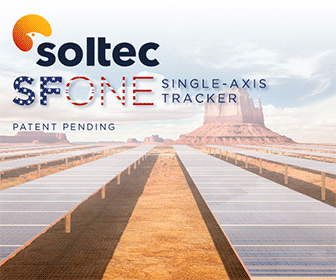Large Array Solar Panel Cleaning
What is the best way to clean large solar panel arrays? What are the main concerns? Whether it's a large commercial community solar garden or utility-grade solar farm, following basic guidelines can increase system output and reduce panel damage.
Prior to cleaning, you should practice the following standard operating procedures: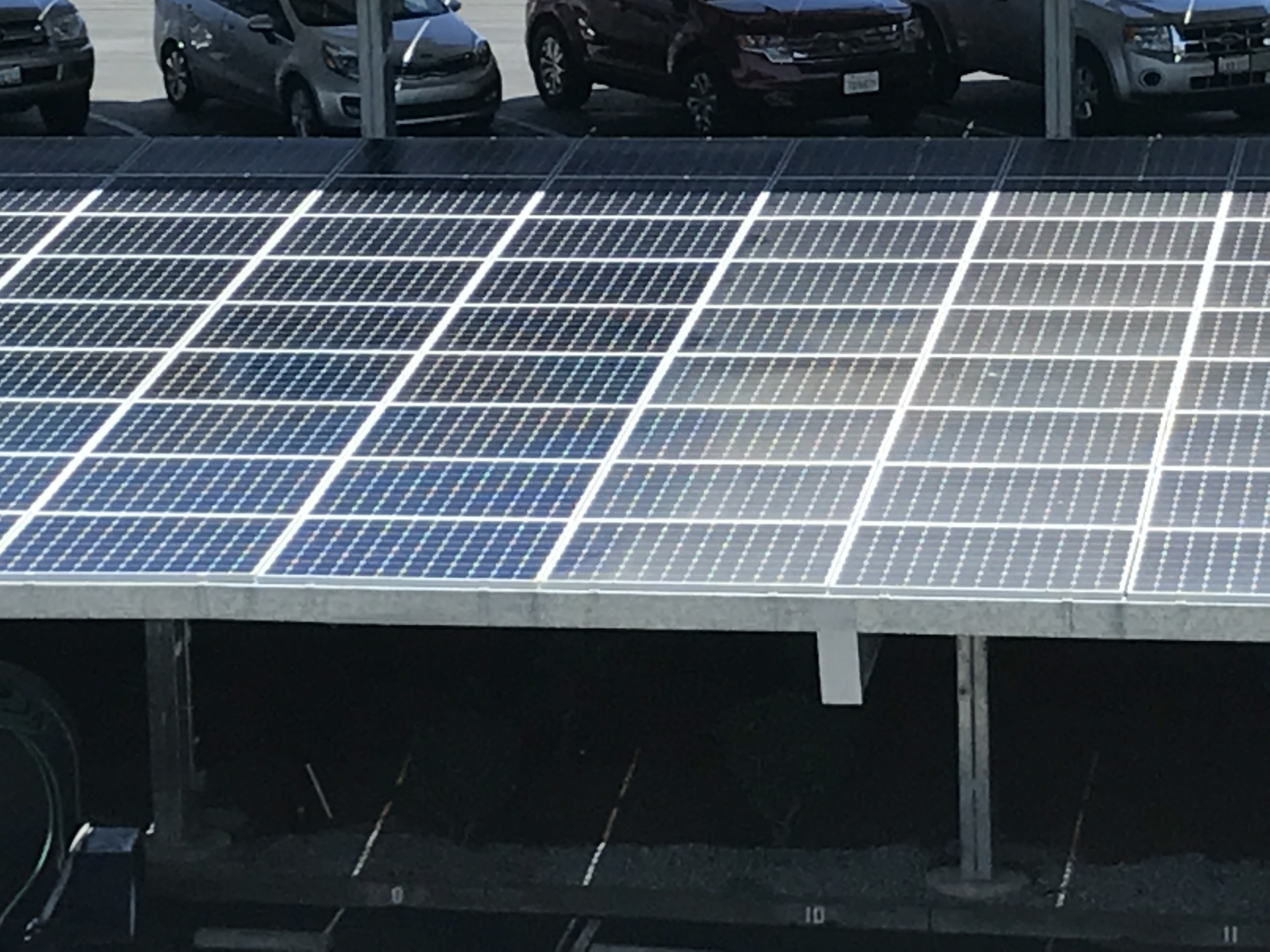
- Inspect the entire solar array system to detect loose or broken wires, damaged panels, or improperly functioning apparatus. Make necessary repairs or modifications for electrical safety.
- Trim or remove any vegetation that may interfere with the system's operation.
- Schedule panel cleaning early in the day, or at night when it is cool. This minimizes thermal stress on photovoltaic cells and protective glass, which could damage the panels. Cold water can microfracture hot panels. Also, a hot panel can evaporate water too quickly before it has dissolved and lifted contaminants.
Once the array is inspected according to system guidelines, and any adjustments to meet code or specs are done, it is time to clean the panels. What do you need in order to clean them?
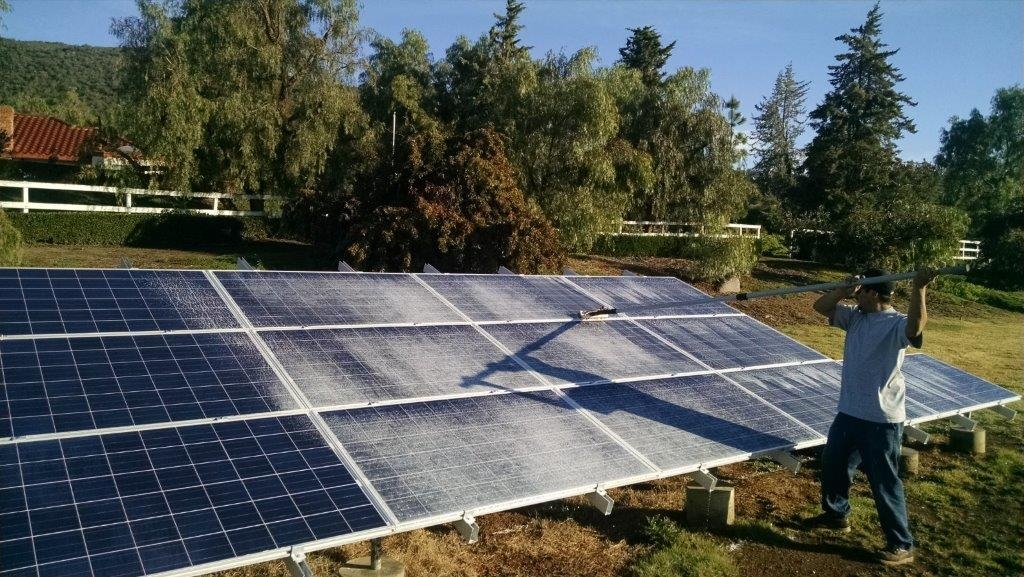 Spray systems are one of a variety of equipment available on the market for cleaning solar panels. Automated spray systems, much like irrigation systems, are mounted on or near panels to regularly remove dirt. Small manual systems are available with handheld or back-mounted pack devices that spray water onto panels - O&M personnel then use brushes to scrub the panels prior to a final rinse. Manual systems are useful in remote locations, or where larger machines or vehicles can't navigate tightly clustered rows of an array. Large, automated truck-mounted brush systems and tanker truck operations are generally used on utility grade and larger solar systems. These often employ an assortment of hoses that are connected to the tanker truck reservoir, as well as the support personnel needed to scrub down panels to remove heavier grime.
Spray systems are one of a variety of equipment available on the market for cleaning solar panels. Automated spray systems, much like irrigation systems, are mounted on or near panels to regularly remove dirt. Small manual systems are available with handheld or back-mounted pack devices that spray water onto panels - O&M personnel then use brushes to scrub the panels prior to a final rinse. Manual systems are useful in remote locations, or where larger machines or vehicles can't navigate tightly clustered rows of an array. Large, automated truck-mounted brush systems and tanker truck operations are generally used on utility grade and larger solar systems. These often employ an assortment of hoses that are connected to the tanker truck reservoir, as well as the support personnel needed to scrub down panels to remove heavier grime.
For years, the industry has recommended using water with this equipment. Unfortunately, plain water just isn't an effective cleaner.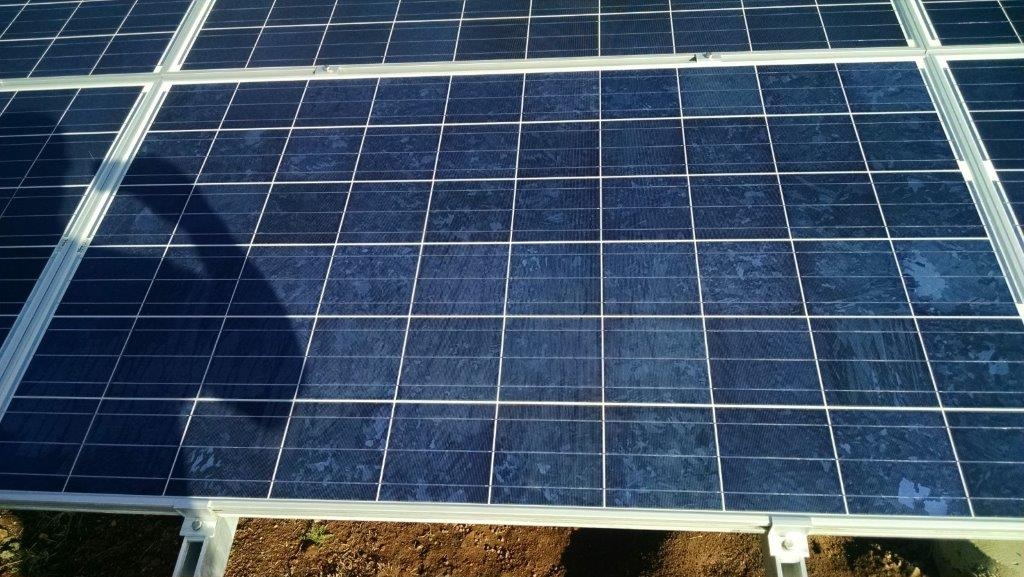
Many solar panel manufacturers have claimed that you don't need to clean panels, or, if cleaning is absolutely necessary, to just use water (more specifically, deionized water to reduce mineral deposits and spotting). However, large-scale solar farms that have been in operation for a few years tend to collect a layer of dirt on their panels; this prevents them from operating at their maximum output, which can cause problems for the owners. Facilities located in dry climates, or near agricultural fields, coastal areas, volcanos, airports, bird flight paths, or industrial areas have almost immediate output loss due to contaminant accumulation on the panels. Many arrays require more frequent cleaning simply due to their location, and many of the contaminants do not easily rinse off with water alone. What is the best option to effectively clean off bird droppings, jet fuel residue, plant matter, dust, sand, and other contaminants?
Cleaning tough contaminants off panels with water additives is relatively easy. The real challenge is cleaning safely with a product that does not degrade panel films or the aluminum support rails. Untested products may be effective at cleaning, but can also shorten equipment life. Proven compatibility is paramount. Specialty solar panel cleaners are commercially available. Quality panel manufacturers will have tested cleaning products for compatibility, and are an excellent source for recommendations.
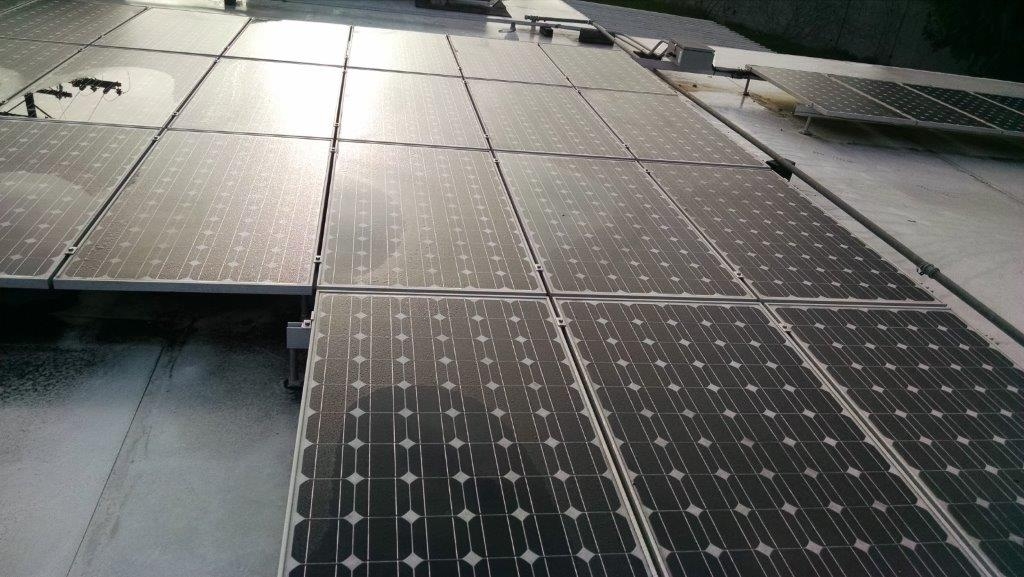
Detergent, or any other product that is added to the water in a panel cleaning system, should meet the following requirements:
- It must be compatible with the solar panel films, aluminum rails, racking, and epoxy.
- It should be approved by the solar panel manufacturer.
- It must be biodegradable with low environmental impact, and contain no VOCs.
- It should have low toxicity for worker safety.
- It should be specifically formulated to remove contaminants commonly found on panels.
- It should rinse off thoroughly, with no spotting or residue.
- It should be dilutable in water, and suitable for use with either tap or deionized water.
- It should dissolve and remove dirt, jet fuel residue, and dust off of panels, offering hydroscopic action to achieve this performance enhancement.
If you follow these guidelines for cleaning and maintaining your solar arrays, you will ensure that your system operates at its highest level, at maximum output, and with the longest possible equipment life and ROI.
Tom Fredericks is General Manager/Vice President Electrical Division at American Polywater Corporation is a specialty cleaning manufacturer that offers a product meeting these guidelines: Polywater Solar Panel Wash.
American Polywater Corporation | www.polywater.com/product/polywater-spw-solar-panel-cleaner
Volume: 2018 March/April









.gif?r=4463)
.jpg?r=1448)
.jpg?r=2537)
